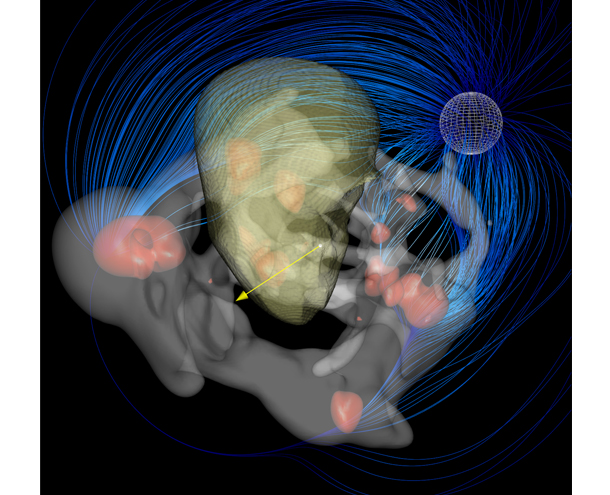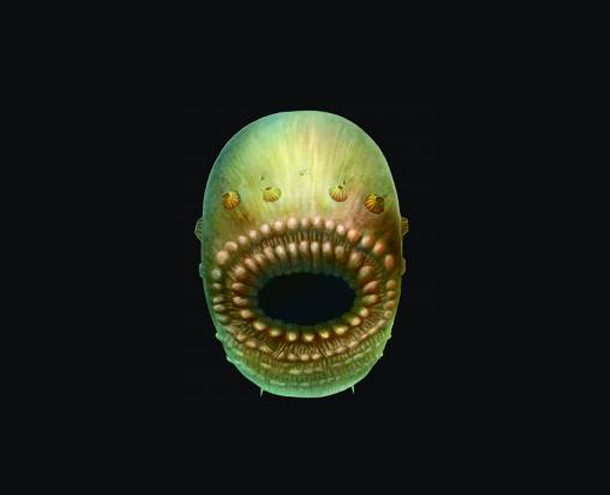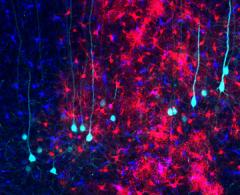
This Article From Issue
May-June 2017
Volume 105, Number 3
Page 139
In this roundup, digital features editor Katie L. Burke summarizes notable recent developments in scientific research, selected from reports compiled in the free electronic newsletter Sigma Xi SmartBrief. Online: https://www.smartbrief.com/sigmaxi/index.jsp
Intergalactic Void Moves Galaxy

Yehuda Hoffman, Daniel Pomarede, R. Brent Tully, Helene Courtois
For decades cosmologists have known that the Milky Way and its companion galaxy Andromeda are traveling through space at about 1.4 million miles per hour relative to the rest of the expanding universe, and now they may know why. One theory had been that gravity was pulling the denser regions of space, including our galaxy. Two huge collections of galaxies, the Great Attractor and the Shapley Concentration, had each respectively been proposed as responsible for the forces acting on the two galaxies, but neither fully explained the movements. A new study proposes that an intergalactic void—an empty region of space in our neighborhood of the universe—is pushing the two galaxies. Researchers looked at the movements of all galaxies and created a three-dimensional map of their movement patterns that was used to infer the distribution of stars and dark matter. This map suggests that the overdense areas pull the Milky Way, and the void pushes it.
Hoffman, Y., D. Pomarède, R. B. Tully, and H. M. Courtois. The dipole repeller. Nature Astronomy 1:0036 (January 30)
Seagrass Curbs Waste Pollution
Seagrass meadows protect coral reefs from the bacteria in untreated wastewater. In seawater off of four islands near Sulawesi in Indonesia, researchers monitored levels of Enterococcus-type bacteria, which can infect many animals, including people, fish, and invertebrates. Levels of potentially pathogenic bacteria were reduced by more than half at sites that had seagrass beds compared with sites lacking such beds. Although seagrass meadows are widespread, they have been declining at a rate of 7 percent per year since 1990 because of coastal development and destructive fishing practices. Seagrasses were already known to provide other ecosystem services; for example, they are a carbon sink, they cycle nutrients, and they anchor sediments in place. No one is sure exactly how the seagrasses achieve their antimicrobial properties—whether it’s through the production of biocides, the release of oxygen, or the stabilization of sediment.
Lamb, J. B., et al. Seagrass ecosystems reduce exposure to bacterial pathogens of humans, fishes, and invertebrates. Science 355:731–733 (February 17)
Neanderthal DNA’s Effects Today
Genes passed down to some modern humans from ancestors who mated with Neanderthals around 50,000 years ago affect gene expression, according to a new study. Previous studies had shown that Neanderthal genes were correlated with fat metabolism, depression, and lupus risk, but no one had yet looked for mechanisms behind these links. In this study, researchers identified people who carried both a Neanderthal version and a modern-human version of any given human gene. For each gene, the expression of each variant was compared in 52 different tissues. Expression of Neanderthal alleles was particularly low in tissues from the brain and testes, suggesting that these tissues have evolved rapidly since the divergence of modern humans and Neanderthals. The changes in genetic activation in the testes show how the two species may have become sexually incompatible. For example, one gene with reduced activation in the Neanderthal variant affects the formation of the sperm’s tail and thus its ability to fertilize an egg. Further research could study the effects of other hominin (such as Denisovan) gene variants on expression or could study a broader set of genes and cell types.
McCoy, R. C., J. Wakefield, and J. M. Akey. Impacts of the Neanderthal-introgressed sequences on the landscape of human gene expression. Cell 168:916–927 (February 23)
Missing Link in Animal Evolution

Jian Han
A fossilized 540-million-year-old animal found in China is the earliest known common ancestor to all vertebrates as well as to certain invertebrates, such as starfish and sea urchins. This broad group in the animal kingdom, called deuterostomes, is defined by the fact that their embryos develop an anus first and then a mouth. The fossils were about the size of a grain of sand. The animal, named Saccorhytus, was symmetrical and, unlike its descendants, did not seem to have an anus. Instead, it probably used the same orifice for consumption and excretion, as is true of more ancestral animals such as sponges and jellyfish. Saccorhytus was covered in a thin, flexible skin and muscles, indicating that it could get around by wriggling. Conical-shaped structures on its body may have allowed water out that it had swallowed, and looked like an early form of gills.
Han, J., S. C. Morris, Q. Ou, D. Shu, and H. Huang. Meiofaunal deuterostomes from the basal Cambrian of Shaanxi (China). Nature 542:228–231 (February 9)
Contagious Laughter in Keas
The kea, a playful parrot that lives in New Zealand, has a specific call that puts other keas in a good mood—making it the first known nonmammal to show contagious emotion, which has been documented in humans, chimpanzees, and rats. The kea warbles when it plays. To find out whether this call affects the emotions of other keas, rather than simply being an expression of pleasure, researchers broadcast recordings of several bird calls and documented wild keas’ reactions. Calls that were broadcast included the kea play call, other kea calls, and the call of the South Island robin. When keas of either sex heard the play calls, they played more and for longer than they did when listening to the other calls. This reaction suggests that the play call makes keas feel like playing. This behavior is comparable to the way contagious laughter affects other people’s emotions.

Raoul Schwing/Vetmiduni Vienna
Schwing, R., X. J. Nelson, A. Wein, and S. Parsons. Positive emotional contagion in a New Zealand parrot. Current Biology 27:R213–R214 (March 20)

American Scientist Comments and Discussion
To discuss our articles or comment on them, please share them and tag American Scientist on social media platforms. Here are links to our profiles on Twitter, Facebook, and LinkedIn.
If we re-share your post, we will moderate comments/discussion following our comments policy.